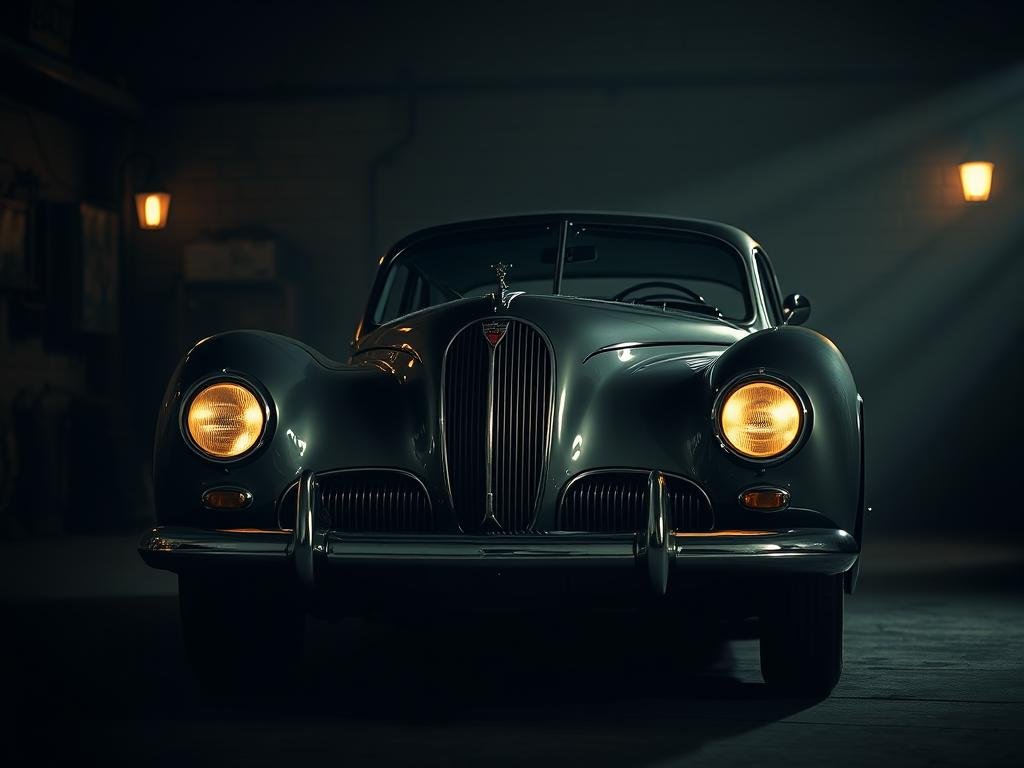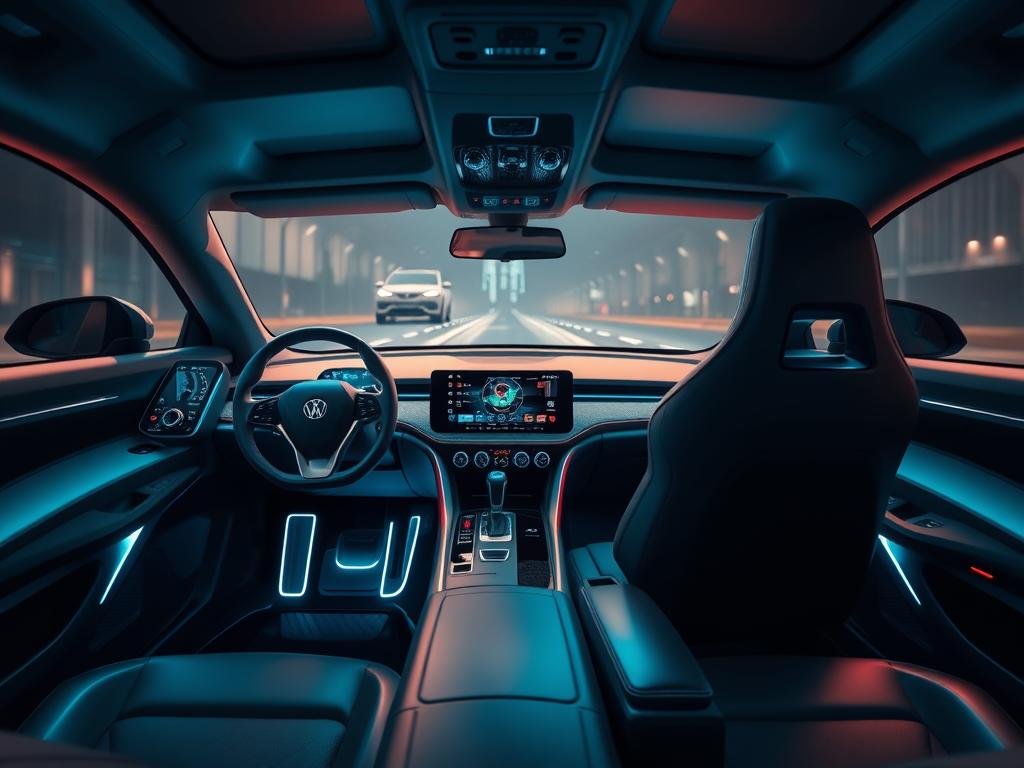
There’s something magical about classic cars. They’re not just vehicles; they’re time capsules that tell stories of innovation, design, and passion.
My fascination with these relics began years ago, when I first laid eyes on a vintage Smart Fortwo. Its compact size and quirky charm sparked a curiosity that led me down a road of discovery.
From the futuristic Citroën Ami to the iconic Studebaker Avanti, each car holds a unique place in automotive history. These aren’t just machines; they’re pieces of art that reflect the creativity and ingenuity of their time. Every curve, every detail, whispers a story waiting to be told.
This journey isn’t just about nostalgia. It’s about uncovering the hidden gems that shaped the way we think about design and innovation. Join me as we explore the fascinating world of classic cars, where every model has a tale to tell and every detail matters.
Discovering the Hidden Gems of Automotive History
Hidden within automotive history are gems that redefine innovation and design. These vehicles, often overlooked, have shaped the way we think about transportation and style. From compact microcars to daring forgotten classics, each model tells a story of creativity and progress.

Microcars: Small Wonders with a Big Impact
Microcars may be small, but their impact is undeniable. Vehicles like the Citroën Ami and Smart Fortwo challenged the norm with their compact designs. They were perfect for urban environments, offering convenience and efficiency.
These cars were ahead of their time, incorporating technology and production techniques that made them futuristic. Their sustainability and charm continue to inspire modern designs. Microcars prove that size doesn’t limit innovation.
Forgotten Classics: Relics of Innovation and Design
Some vehicles, like the Studebaker Avanti and AMC Pacer, are often forgotten but deserve recognition. These models pushed boundaries with their daring designs and advanced features. They represent a time when the automotive industry embraced bold ideas.
These forgotten classics are more than just cars; they’re pieces of art. Their legacy lives on, influencing today’s vehicles and reminding us of the power of innovation. Exploring these hidden treasures is a journey through the heart of automotive history.
| Model | Key Feature | Impact |
|---|---|---|
| Citroën Ami | Compact Design | Urban Efficiency |
| Smart Fortwo | Innovative Technology | Sustainability |
| Studebaker Avanti | Daring Design | Bold Innovation |
| AMC Pacer | Unique Style | Legacy of Creativity |
- This vintage car is assembled from 897+ building block parts and has colorful paper instructions to help you easily asse…
- Mould King car 10115 is a static version, without motor and lithium battery. This product restores the original to the g…
- All our building blocks are made of high-quality ABS materials and carbon fiber materials. It is designed in accordance …
Secrets of the Automotive World – My Personal Journey
My journey into the world of classic cars began with a spark of curiosity and a love for design. It wasn’t just about the vehicles themselves but the stories they carried. Each car felt like a piece of history, waiting to be discovered and shared.
Uncovering Rare Vehicles and Their Untold Stories
One of the most thrilling parts of my journey has been uncovering rare vehicles. These hidden gems often have unique designs and intriguing histories. For example, I once stumbled upon a vintage Subaru WRX with a detailed accident history that added to its character.
Every car has a story. Some were ahead of their time, while others were forgotten too soon. Learning about their production details and the challenges they faced deepened my respect for the innovation of earlier models.
Cult Classics: The Passion and Community Behind Iconic Cars
Attending classic car shows has been a highlight of my journey. These events are more than just exhibitions; they’re gatherings of passionate enthusiasts. Cult classics like the Toyota Land Cruiser bring people together, creating a sense of community.
These cars are more than vehicles—they’re symbols of a shared love for design and history. The stories shared by fellow enthusiasts have reinforced my belief in the standard of excellence that defines automotive culture.
“Every car has a story, and every story connects us to a bygone era.”
My journey has taught me that the road to understanding automotive history is filled with unexpected delights. From rare finds to vibrant communities, every step fuels my enthusiasm. For those interested in luxury and performance, the Maserati ownership experience offers a glimpse into a world of elegance and innovation.
Modern Innovations and Vehicle Privacy in the Automotive Industry
Modern cars are no longer just about transportation; they’re hubs of innovation and connectivity. The rapid evolution of technology has transformed vehicles into smart devices on wheels. This shift brings exciting advancements but also raises important questions about data privacy and consumer safety.

Navigating the Digital Age: Vehicle Privacy and Data Transparency
As cars become more connected, the amount of data they collect grows exponentially. From GPS locations to driving behaviors, vehicles now gather a wealth of personal information. Tools like the Vehicle Privacy Report™ empower consumers by revealing how manufacturers handle this data.
Transparency is key. Automakers are now committed to providing clear information about data collection and usage. This ensures consumers understand what’s being shared and why. Affirmative consent is required for sensitive data like geolocation or biometrics, giving drivers control over their privacy.
How Cutting-Edge Tech is Shaping Today’s Driving Experience
Innovations in edge technology are redefining the driving experience. Features like automatic crash notification systems enhance safety by alerting emergency responders in real-time. These advancements not only protect drivers but also pave the way for a safer road environment.
Modern design and production processes integrate digital tools to improve efficiency and performance. From infotainment systems to subscription-based services, cars now offer a seamless blend of convenience and innovation. This integration reflects the future of the automotive industry.
“Understanding how data is collected and used gives consumers a clearer view of their privacy and safety.”
For those interested in learning more about modern innovations in the automotive industry, this resource provides valuable insights into the challenges and opportunities of data management.
The Future of Automotive Design: From Concepts to Classics
The future of automotive design is a blend of tradition and cutting-edge innovation. As we look ahead, concept cars are redefining what we expect from vehicles. These models push boundaries, merging classic aesthetics with futuristic technology to create something truly remarkable.
Exploring Concept Cars and Next-Gen Mobility Solutions
Concept cars like the Mercedes-Benz VISION AVTR and the fictional DeLorean DMC-12 from Back to the Future illustrate the potential of next-gen mobility. These vehicles are not just about looks; they integrate advanced technology to improve performance and sustainability.
Designers are focusing on streamlining production processes while maintaining the charm of classic models. For example, the Buick Y-Job, the first concept car, influenced design for decades. Today, models like the Mercedes-Benz C111 continue to inspire with their groundbreaking features.
Key advancements in the industry include:
- Integration of electric powertrains for eco-friendly transportation.
- Use of digital tools to enhance design accuracy and efficiency.
- Development of autonomous features for safer driving experiences.
These innovations are not just about the vehicles themselves but also about shaping the future of transportation. By combining tradition with cutting-edge technology, the automotive industry is creating a new standard for design and functionality.
“Concept cars are more than just ideas; they’re glimpses into the future of mobility.”
As we move forward, the challenge lies in balancing innovation with the timeless appeal of classic designs. Every concept car offers a decision-making glimpse into what the future holds, sparking my imagination about life on the road.
Conclusion
Exploring the evolution of cars has been a journey filled with discovery and inspiration. From uncovering rare vehicles to understanding modern technology, each step has deepened my passion for this dynamic industry.
Classic designs continue to influence today’s innovations, blending timeless aesthetics with cutting-edge advancements. Modern production techniques and digital tools are shaping the future, offering consumers safer and more efficient options.
Every car tells a story, whether it’s a relic of the past or a concept for the future. This journey has reminded me to keep an open mind, appreciating both tradition and progress. The world of cars is ever-evolving, and I look forward to seeing where it goes next.
FAQ
What are microcars, and why are they significant in automotive history?
Microcars are compact vehicles designed for efficiency and affordability. They gained popularity post-World War II, offering a practical solution for urban transportation. Their innovative design and engineering left a lasting impact on the industry.
Can you share an example of a forgotten classic car?
One example is the Tucker 48, a car ahead of its time with features like a rear-mounted engine and safety innovations. Despite its short production run, it remains a symbol of creativity and ambition in the automotive world.
What makes cult classic cars so special?
Cult classics like the Volkswagen Beetle or DeLorean DMC-12 are beloved for their unique designs, cultural significance, and the passionate communities they inspire. They often represent a specific era or lifestyle.
How is cutting-edge technology changing the driving experience today?
Modern advancements like electric vehicles, autonomous driving, and connected car systems are revolutionizing how we drive. These innovations enhance safety, convenience, and sustainability on the road.
What role do concept cars play in shaping the future of automotive design?
Concept cars serve as a glimpse into the future, showcasing bold ideas and next-gen technologies. They push boundaries in design, performance, and sustainability, influencing the direction of the industry.
How can I ensure my vehicle’s privacy in the digital age?
Protecting your car’s data involves understanding how your vehicle collects and shares information. Regularly updating software, reviewing privacy settings, and staying informed about manufacturer policies are key steps.
What’s the best way to start exploring rare and classic cars?
Begin by attending car shows, joining enthusiast clubs, or researching online forums. These platforms offer opportunities to learn, connect with experts, and discover hidden gems in the automotive world.

